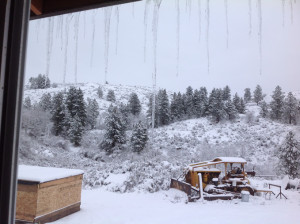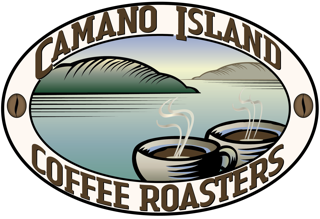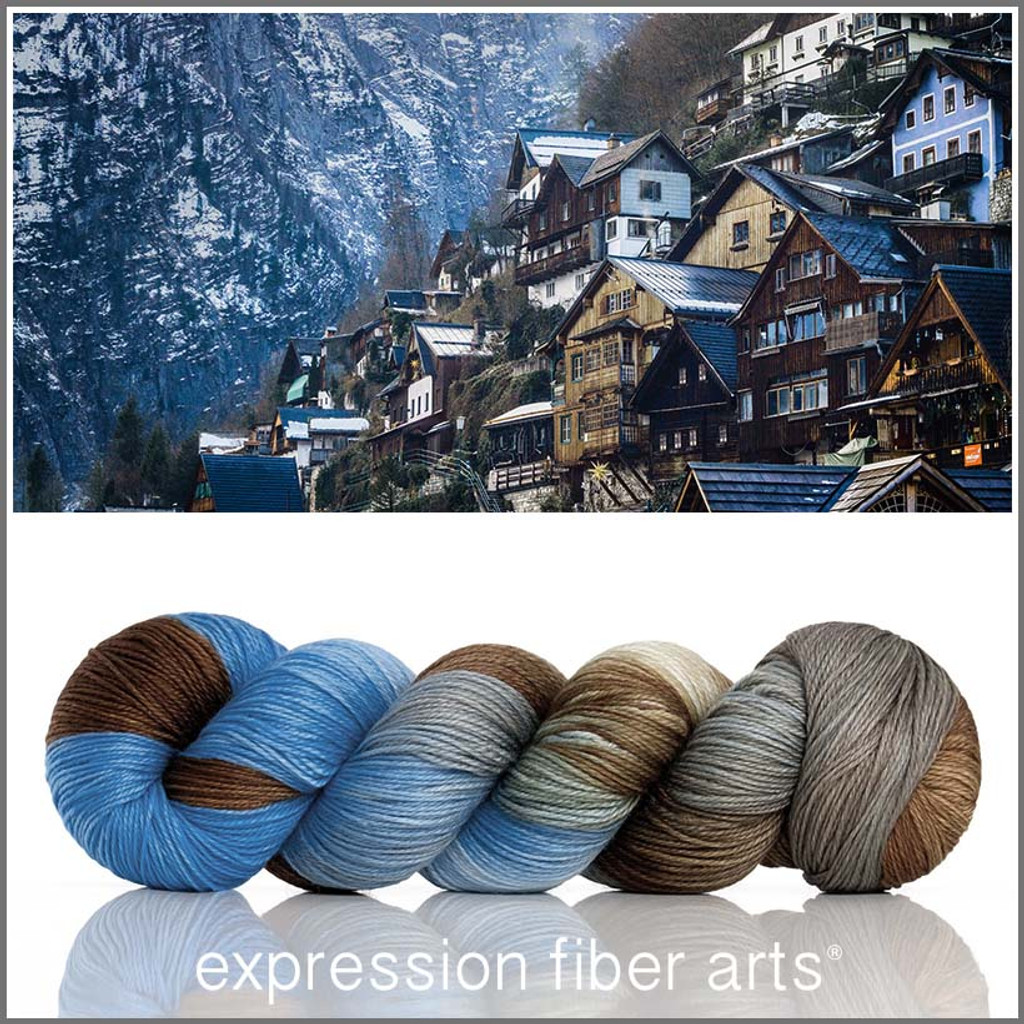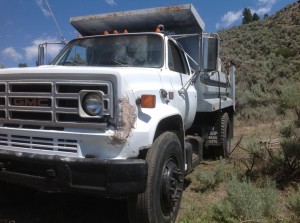 When we arrived here at the land we call DIAXARIS, there was no water system in place. The cabin had some level of plumbing, but no water fed the house. Coming from a girl who has never been camping before, I can say those early days here were sort of like camping ๐ We lived out of 5 gallon jugs and bottled water for a few weeks. Oh yes, and there was this thing about howling coyotes at night; not to mention the pitch black darkness of the midnight sky. It’s funny the things that can play tricks on a person in unfamiliar environments. Lucky for me, Strat is such a gentlemen; he provided overwatch. Overwatch, for those unfamiliar with the term, means taking position in a manner where the terrain can be observed and, in this case, predators can be dealt with. There is no such thing as walking around without the proper tools and taking necessary precautions for the unexpected encounter.
When we arrived here at the land we call DIAXARIS, there was no water system in place. The cabin had some level of plumbing, but no water fed the house. Coming from a girl who has never been camping before, I can say those early days here were sort of like camping ๐ We lived out of 5 gallon jugs and bottled water for a few weeks. Oh yes, and there was this thing about howling coyotes at night; not to mention the pitch black darkness of the midnight sky. It’s funny the things that can play tricks on a person in unfamiliar environments. Lucky for me, Strat is such a gentlemen; he provided overwatch. Overwatch, for those unfamiliar with the term, means taking position in a manner where the terrain can be observed and, in this case, predators can be dealt with. There is no such thing as walking around without the proper tools and taking necessary precautions for the unexpected encounter.
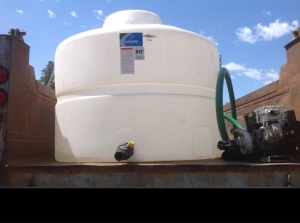 Getting the house plumbed was a high priority. We decided to invest in a 625 gallon water tank. This tank satย in the back of the GMC7000 (aka: Big Truck) for a couple of weeks. We would fill the 5 gallon jugs as needed. It was September, 2012 when all of this was taking place. The weather was still very hot, making outdoor sponge baths easy to tolerate. We would heat water on the propane burner, two gallons was the allocated bath/hair washing water. One learns, quickly, to make due when resources are difficult to come by and are in limited supply. Water is life and very precious. When a person lives on the grid, I think it is easy to take something like the supply of clean water and power for granted.
Getting the house plumbed was a high priority. We decided to invest in a 625 gallon water tank. This tank satย in the back of the GMC7000 (aka: Big Truck) for a couple of weeks. We would fill the 5 gallon jugs as needed. It was September, 2012 when all of this was taking place. The weather was still very hot, making outdoor sponge baths easy to tolerate. We would heat water on the propane burner, two gallons was the allocated bath/hair washing water. One learns, quickly, to make due when resources are difficult to come by and are in limited supply. Water is life and very precious. When a person lives on the grid, I think it is easy to take something like the supply of clean water and power for granted.
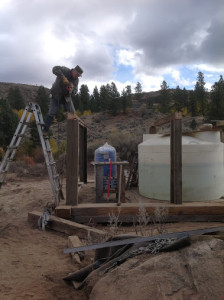
Strat working on building out the pumphouse, which will protect a 1,400 gallon reservoir with pressure tank.
The first thing we needed to do is build a pumphouse to protect the water system. The temperature can get well below freezing here and the last thing we needed to deal with in the winter was a frozen water system. The idea was to use the 625 gallon tank as a transport tank and fill a 1,400 gallon tank which would be the reservoir.
The water comes from a well about a mile away from the pumphouse. This well serves as our primary source of water; although it has been known to go dry on us a few times. I would like to tell you that it would be easy to lay pipe from the well to the reservoir, but that is not the case. The terrain here is quite challenging; rock and mountains everywhere.ย We filter the water before it makes it’s way into the house. 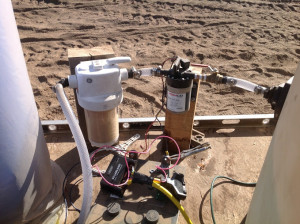 Here you see a pump (right) and a filter (left). The pump is powered by solar and an 8D battery.
Here you see a pump (right) and a filter (left). The pump is powered by solar and an 8D battery.
This is the panel house that holds the charge controller to control how much solar hits the battery. It’s built with a rustic, frontier these, fitting it with the “feel” of the cabin. These two panels and one 8D battery has been very, very reliable for the water system.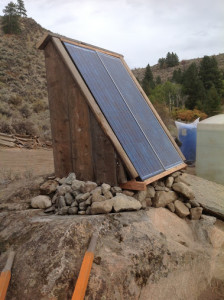
We worked very hard to get the house plumbed and the pumphouse built before Winter. Somewhere around the end of September we had water running to the house; including the hot water tank. Keep in mind, 2012 was our first Winter here and we knew to expect very cold temps. Never experiencing it before, we just weren’t really sure what we would actually encounter. We did get the pumphouse finished in time; well before Thanksgiving.
December 10th, 2012, started to give us an idea of what sort of winter we were in for. On the 11th, we actually could not get water from the well and had to go to a friend’s place in town to fill our tank. I recall it being a rough night getting up the hill. That was the last time we got water for a few months. By the time December 14th came around, we were snowed in. We spent the next four months snowed in and what we fondly referred to as “harvesting snow.”
Stay tuned for what it takes to actually get water to the reservoir.
Until then, stay safe out there…
Angel & Strat


